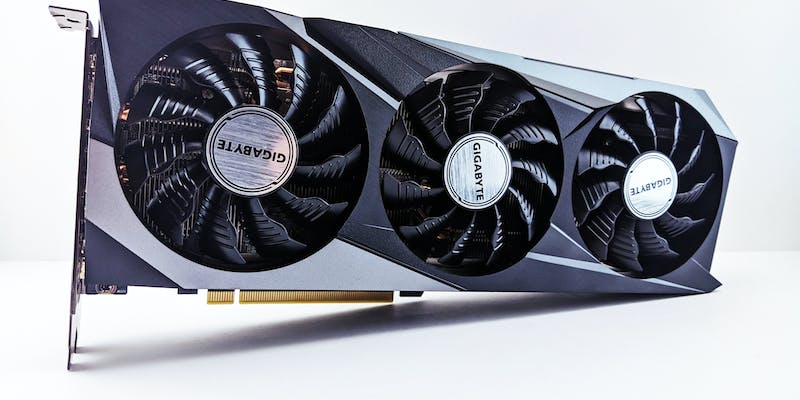The technology landscape is constantly evolving, and NVIDIA, the industry leader in graphics processing units (GPUs), is once again making waves with its highly anticipated next-generation graphics cards. Set to debut in late 2024 or early 2025, the NVIDIA GeForce RTX 50 ‘Blackwell’ GPU architecture is expected to redefine gaming performance and efficiency. This groundbreaking advancement will be made possible by harnessing the cutting-edge 3nm process technology from Taiwan Semiconductor Manufacturing Company (TSMC).
Overview of the Latest 3nm Process Technology
The 3nm process technology promises significant improvements in power reduction, transistor performance, area reduction, and density increase. With a projected 25-30% reduction in power, 10-15% additional performance per transistor, a 42% reduction in area, and a density increase of 1.7x, NVIDIA’s upcoming GPUs will offer groundbreaking performance and energy efficiency.
NVIDIA’s Efficiency Advantage
Building upon its existing efficiency lead over competitors, NVIDIA is expected to further increase its advantage with the transition to the 3nm node. The improved power efficiency of the 3nm process technology will enable NVIDIA to push the boundaries of performance while maintaining lower power consumption. This advantage will solidify the brand’s position as the go-to choice for gamers and professionals alike.
Blackwell Gaming GPUs
NVIDIA’s Blackwell Gaming GPUs will be at the forefront of utilizing TSMC’s 3nm process node. This combination of advanced architecture and process technology aims to deliver unparalleled gaming performance, taking the immersive experience to new heights. Gamers can expect smoother frame rates, enhanced visual fidelity, and reduced power consumption, resulting in a truly remarkable gaming experience.
Memory Solution for NVIDIA’s Gaming GPUs
Accompanying the revolutionary 3nm process technology, NVIDIA’s gaming-focused cards are expected to adopt the GDDR7 memory solution. This next-generation memory technology will provide faster data access speeds and increased bandwidth. Gamers can anticipate improved performance in memory-intensive applications, enabling them to unleash the full potential of their gaming rigs.
Unified Naming Convention
A notable development with the next generation of NVIDIA GPUs is the adoption of a unified naming convention for both the High-Performance Computing (HPC) and Gaming sides. For the first time in years, both segments will share the same architecture name, signifying a cohesive and consistent approach to graphics processing technology. This unification promotes ease of understanding and streamlines communication within the industry and among consumers.
Chiplet-based Design and Monolithic Dies
While the gaming side of NVIDIA’s GPUs will continue with monolithic dies, there are indications that the HPC side may leverage a chiplet-based design. This approach involves dividing the GPU into smaller “chiplets” that can be interconnected, enabling increased scalability and customization. The potential shift to a chiplet-based design for HPC applications showcases NVIDIA’s commitment to delivering tailored solutions for various computing needs.
DisplayPort 2.1 technology
NVIDIA is expected to utilize DisplayPort 2.1 technology in its next-generation graphics cards. This advanced display interface brings NVIDIA on par with AMD’s Radeon RX 7000 GPUs, ensuring support for the latest display standards and enhanced visual experiences. Users can look forward to higher resolutions, faster refresh rates, and improved multi-monitor capabilities, pushing the boundaries of what is visually achievable.
Disappointment over the exclusion of DP 2.1 on RTX 40
The exclusion of DisplayPort 2.1 on the GeForce RTX 40 GPUs came as a major disappointment for technology enthusiasts. While the reasons behind this decision remain unknown, users expressed their frustration at the missed opportunity to harness the full potential of the latest display technologies. However, it is important to note that NVIDIA’s commitment to innovation and performance remains unwavering.
Anticipated Release of the NVIDIA GeForce RTX 50 ‘Blackwell’ GPU
The NVIDIA GeForce RTX 50 ‘Blackwell’ GPU architecture is eagerly anticipated to debut in late 2024 or early 2025. With its utilization of the 3nm process technology, this architecture aims to push the limits of gaming performance to new heights. Gamers and enthusiasts can anticipate significant advancements in graphics rendering, real-time ray tracing, and artificial intelligence capabilities.
As NVIDIA gears up to launch its next-generation graphics cards, the industry braces for a revolution in gaming performance and efficiency. By leveraging TSMC’s 3nm process technology, NVIDIA aims to deliver unprecedented power reduction, transistor performance, area reduction, and density increase. The adoption of GDDR7 memory, unified naming conventions, and potential chiplet-based designs further demonstrate NVIDIA’s commitment to pushing the boundaries of what is possible in GPU technology. With the promise of enhanced visual experiences and immersive gameplay, the NVIDIA GeForce RTX 50 ‘Blackwell’ GPU architecture is set to define the future of gaming.

